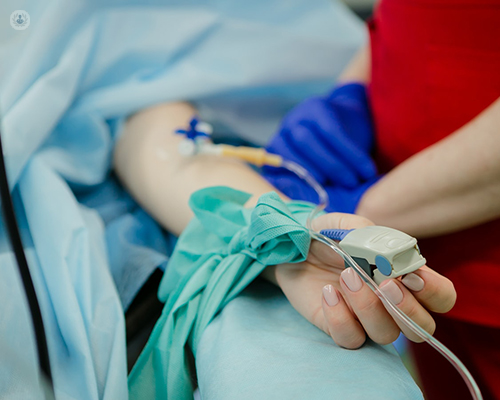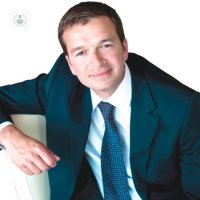Robot-assisted mitral valve surgery
Escrito por:Thanks to innovative technology such as the da Vinci Surgical System®, patients are able to undergo mitral valve reconstruction using minimally invasive and robotic techniques. This leaves them with much less pain and the chance of infection, and much faster recovery than conventional surgery (sternotomy).
Top cardiothoracic surgeon Mr Paul Modi is the only mitral valve surgeon in the UK who uses the da Vinci® robotic system in his hospital. Here he explains when mitral valve surgery is necessary and what happens during ‘robotic’ surgery.

What causes mitral valve disease?
There are lots of causes of mitral valve disease, from degenerative causes (such as Barlow’s disease and fibro-elastic deficiency) through to infection (endocarditis) and rheumatic fever. Degenerative mitral valve disease often occurs when the anchoring strings (or chords) that hold the valve inside the heartbreak causing blood to leak backwards.
The increased pressure of blood in the lungs and the extra work that the heart must do which results from this leads to patients feeling breathless and tired on exertion. We know that early corrective surgery to reconstruct the valve results in resolution of these symptoms and restoration of life expectancy to normal.
When is mitral valve surgery necessary?
The strongest indications for surgery are either symptoms, such as shortness of breath or tiredness, or a decline in heart function. Other indications for surgery include an irregular heartbeat (atrial fibrillation) and high blood pressure in the lungs.
It is generally recognised that surgery early in the course of the disease leads to better long-term outcomes and this is even true in patients who have no symptoms.
What is robotic mitral valve surgery?
This is the very least invasive form of surgery for the mitral valve. The operation is done through four 8mm incisions using the da Vinci® robot from Intuitive Surgical. The procedure is performed on the right-hand side of the chest - most people think it is on the left because the heart is on the left. We still use the heart-lung machine because we have to stop the heart to get inside to do a delicate valve reconstruction.
Why is a robot used during the surgery?
It’s not a ‘robot’ in the common meaning of the word as it’s not an autonomous machine that makes a decision for itself. The surgeon sits at a console and moves the arms, so it doesn’t do anything on its own. Telemanipulation is a better way to describe it, this being a way of transmitting hand movements from the surgeon’s console to a remote robotic device. It’s essentially a way of minimising the surgical trauma that patients may otherwise be subject to.
What are the options available for mitral valve surgery?
There are three surgical options for mitral valve repair:
1) Sternotomy – uses a 6-9-inch incision on the front of the chest to divide the breastbone and it takes 8-12 weeks to return to normal activities after this, of which about a week is in hospital. However, it sounds worse than it is and is, in fact, very well tolerated and used for the majority of heart operations.
2) ‘Mini mitral’ (short for minimally invasive mitral) procedure – uses a 4cm incision on the right-hand side of the chest and is associated with a 3-6 week recovery period (but may be quicker than this is some patients).
3) Robotic mitral valve surgery – uses four 8mm incisions and recovery takes 2-3 weeks. This is the very least invasive form of treatment for mitral valve reconstruction.
If you would like to discuss your surgery options with Mr Modi, do not hesitate to make an appointment today.


